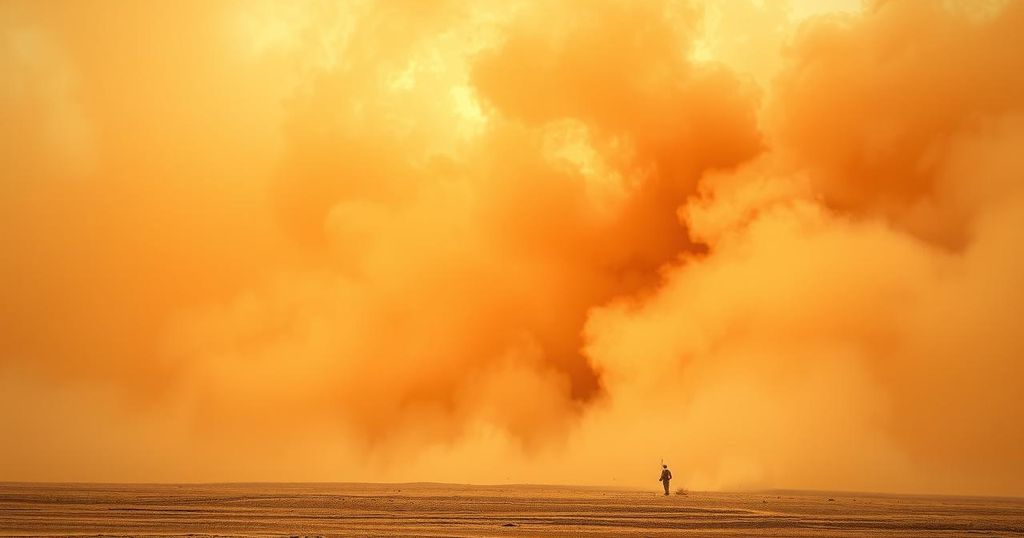Severe Dust Storm Impacts Southern Iraq and Surrounding Areas in April 2025

A significant dust storm in mid-April 2025 affected southern Iraq and the Middle East, reducing visibility and worsening air quality. Nearly 4,000 individuals required emergency medical care due to breathing difficulties, leading to airport closures and remote schooling in Kuwait. The storm underscores the increasing severity of dust events linked to climatic changes in the region.
In mid-April 2025, a significant dust storm swept across southern Iraq and other regions of the Middle East, drastically changing the atmospheric conditions. The airborne dust particles transformed the skies into an orange hue, significantly diminishing visibility and adversely affecting air quality in populated areas.
On April 14, between 9:30 a.m. and 1:50 p.m. local time, NASA’s Terra and Aqua satellites captured striking images of the dust clouds using the MODIS (Moderate Resolution Imaging Spectroradiometer). The prominent dust activity was particularly noted over the arid areas of southern Iraq and northern Saudi Arabia.
The dust storm resulted in serious health issues, sending nearly 4,000 individuals to emergency rooms across various Iraqi provinces. Al Başrah (Basra) reported approximately 1,000 cases, while An Najaf had about 500. The impact was visually documented by BBC videos showing orange skies and low visibility, prompting airport closures in the affected cities.
In addition to Iraq, the powerful western winds carried dust into Kuwait, with weather stations recording gusts over 80 kilometers (50 miles) per hour. Consequently, Kuwaiti authorities announced a shift to remote learning for schools on April 15 to minimize the impacts of poor air quality on students.
Dust storms are particularly prevalent in Iraq during late spring and summer, driven by seasonal winds that traverse vast dust sources. Nevertheless, such storms can also occur in winter and spring, as evidenced by severe dust storms impacting the region in April and May 2022. Experts suggest that diminishing water resources may be exacerbating the frequency and severity of these dust events, as dry conditions facilitate the lifting and transport of loose material.
The mid-April 2025 dust storm in Iraq and surrounding areas illustrated the severe impact of such weather phenomena on health and air quality. The event highlighted not only the immediate effects, including hospitalizations and school closures, but also the long-term environmental concerns that may be increasing the frequency of dust storms. As climate conditions change, the prevalence of these natural disasters may escalate, underscoring the need for awareness and preparedness in affected regions.
Original Source: earthobservatory.nasa.gov







